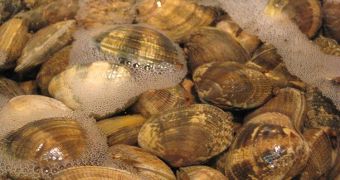An international collaboration featuring American and Israeli researchers announces the creation of a power source for electric motors that is a little bit unconventional. The group has recently developed a method of extracting energy from clams.
In a study that appears to be inspired by the blockbuster “The Matrix,” researchers hooked up three clams to each other, and all of them to an electric motor. The organisms proved capable of providing a small amount of electricity to the device.
This is definitely not the first time that scientists use animals as power sources. In recent times, snails and other creatures have been used to power up small cameras and other electronic devices, mostly for surveillance and intelligence gathering, or similar applications.
The work was conducted by experts at Clarkson University in Potsdam, New York, the same team that implanted electrodes into snails, turning the nematodes into walking biofuel cells. The team is coordinated by chemistry professor Evgeny Katz.
“The challenge of the work with clams was in assembling individual cells in batteries,” he explains. The electrodes his team used were implanted in the main body cavities, which are filled with blood.
The power source is the level of blood sugar in clam blood, which feeds the electrodes. Scientists cannot extract energy from these creatures for prolonged periods of time. They need to stop from time to time, so that the clams can rebuild their blood sugar levels.
A battery made up of three clams proved capable of charging a capacitor with 29 millijoules over 60 minutes. A single, 75-watt light bulb uses 75,000 millijoules per second. This should give you an idea about how little current these “batteries” produce.
However, even this tiny amount is sufficient for certain applications, Innovation News Daily reports. “We need to resolve some engineering problems – most electronic devices require more power than we can get from our implanted cells,” Katz explains.
Details of the research effort were published in the April 12 online issue of the journal Energy & Environmental Science.

 14 DAY TRIAL //
14 DAY TRIAL //